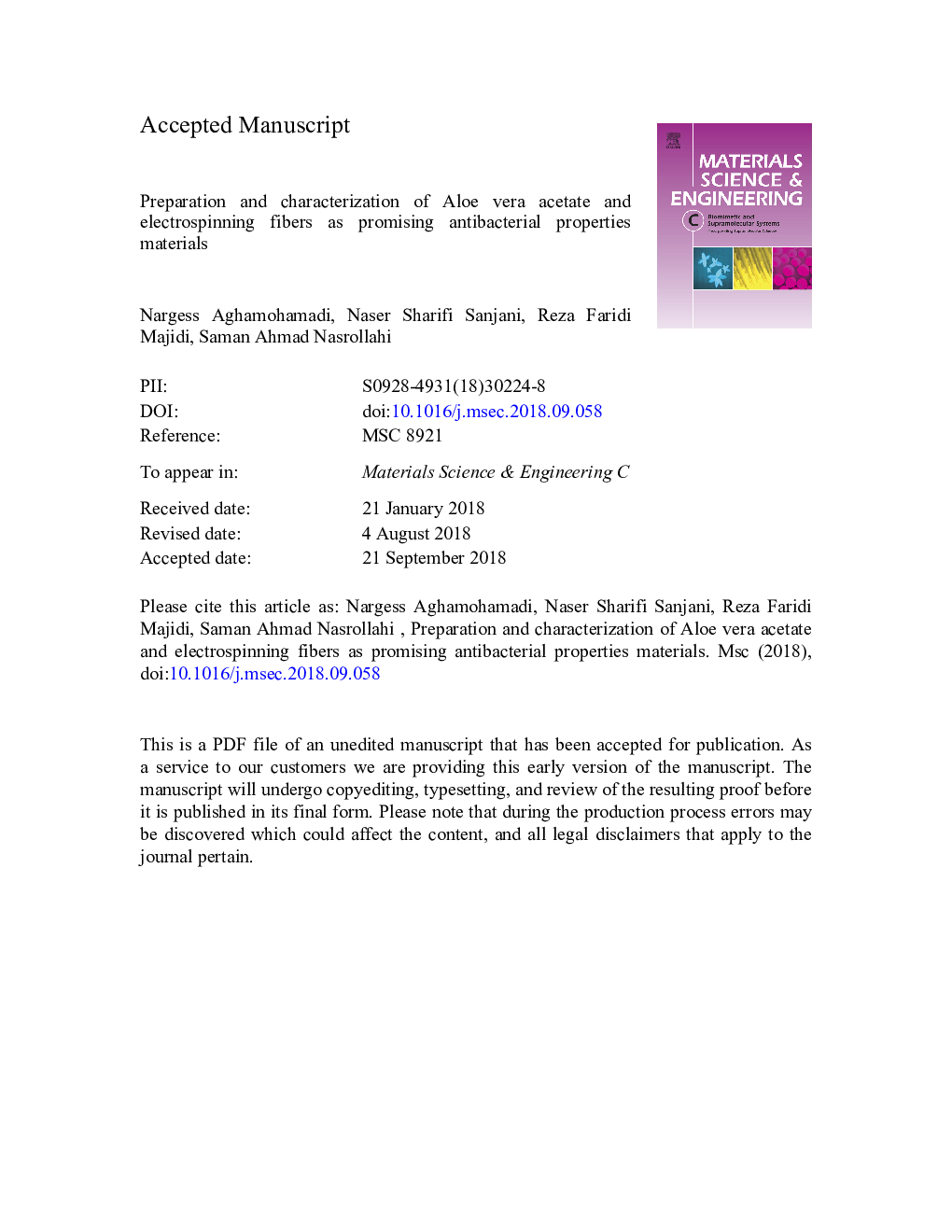| Article ID | Journal | Published Year | Pages | File Type |
|---|---|---|---|---|
| 11026830 | Materials Science and Engineering: C | 2019 | 27 Pages |
Abstract
In this work, the anti-bacterial effect of Aloe vera derivate fibers produced by the electrospinning method was reported. Aloe vera Polyvinylpyrrolidone (Av/PVP) and Aloe vera acetate-Polyvinylpyrrolidone (AvAc/PVP) electrospun fibers were prepared with different concentrations and their microstructure and mechanical properties were studied. Various methods such as differential scanning calorimetry (DSC), thermogravimetry analysis (TGA), water contact angle (CA) tests, Fourier-Transform Nuclear Magnetic Resonance (FT-NMR), scanning electron microscope (SEM), X-ray diffraction (XRD), CHNSO and Fourier-Transform Infrared Spectroscopy (FT-IR) were used to characterize prepared samples. (Av/PVP) electrospun fibers were prepared with different concentrations (6-10â¯wt%) of PVP and 0.2â¯wt% Av blended and tested in medicinal herb for wound healing, antibacterial and anti-inflammatory properties. For further study, the effect of AvAc film on the properties of composite film was studied. AvAc increased the thermal stability and crystallite size percentage of samples. Antibacterial and antiviral test studies on the scaffold displayed no bacterial and viral growth. These results suggest that AvAc/PVP scaffolds could be promising candidates for wound healing applications.
Keywords
Related Topics
Physical Sciences and Engineering
Materials Science
Biomaterials
Authors
Nargess Aghamohamadi, Naser Sharifi Sanjani, Reza Faridi Majidi, Saman Ahmad Nasrollahi,
